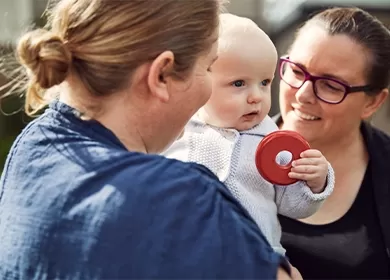Don’t have an account?
Select the donation type you’d like to make
What happens to your body when you have a cold
‘The common cold’ describes a whole range of more than 200 viruses that target the linings on the inside of your nose, your throat and sinuses. How does something so tiny make you feel so awful?
Doctors think that most common cold symptoms are part of your body’s response to the virus, rather than the virus itself. Let’s take a deeper look at what’s going on while your body fights off that cold.
1. Virus attacks
Once one of the common cold viruses finds its destination at the nose, it binds to the cell. The virus hijacks the cell to help it make more viruses that go on to infect other cells, preparing to invade more of your nose and other noses too! Luckily, it doesn’t seem that it does much in the way of destroying your cells like other viruses.
2. Cells send distress signals
Cytokines are the first memos from your immune system to your body in tiny protein form. At any sign of infection, your cells raise the alarm by sending out cytokines messages about the common cold virus setting up shop. Your white blood cells, vessels and brain all read these memos, and focus on the affected areas to shut down the virus immediately.
3. Your blood vessels dilate
The blood vessels around the affected area widen when they get the message. This allows more blood to flow into the area and bring more white blood cells to fight the virus. As a side effect, these areas will become puffy, red and filled with fluid – otherwise known as inflammation, the painful part of a cold.
4. White cells start fighting
Your white blood cells are your main virus-busting team, with different kinds for different roles. Called over by the cytokines, they enlarge the blood vessels even more than the cytokines did. The area gets hotter, wetter and less comfortable for the virus to settle in. Some white cells make antibodies which will target future reinvasions by the virus.
5. The fluid flushes out
With a very densely packed, wet and high-pressure environment, your nose flows like a tap. Your runny nose is an easy way for your body to clear itself from all the used white cells, virus and excess fluid. You’ll notice that your snot turns more green and less clear the longer the cold goes on. The colour is from the protein that your white cells produce to fight the virus.
What it means for the nation's blood supply
If you're fighting a cold this winter, you’ll need your blood to help you fight it off and clean up the mess. As you'd expect, this means many of our reliable regular donors are unable to donate during winter, which can have a dramatic effect on our supply. If you’re feeling healthy and well, help us beat the winter downturn by making an appointment to donate blood.
- Graham, R. (1997). Taking on the common cold. Retrieved from https://www.technologyreview.com/s/400028/taking-on-the-common-cold/
- Hobbs, B. (2017). Meet the real culprits for your nasty cold or flu symptoms. Retrieved from https://www.abc.net.au/news/science/2017-07-07/real-cause-of-cold-and-flu-symptoms/8656768




